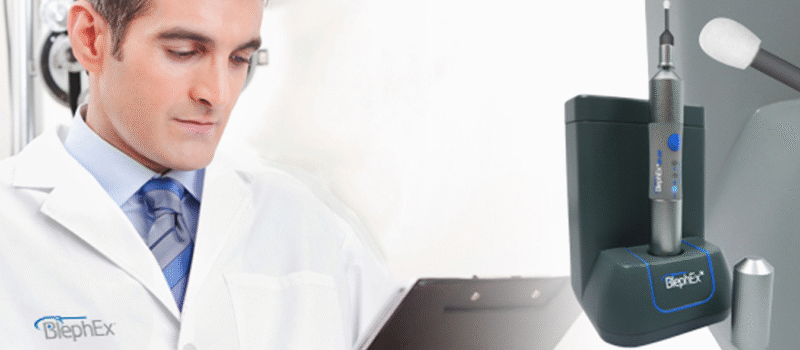When most people think of an optometrist, they imagine a routine eye test to check whether they need glasses or contact lenses. But modern optometry goes far beyond prescribing lenses. Today’s optometrists play a crucial role in the early detection, management, and monitoring of various eye diseases many of which can lead to serious or permanent vision loss if not treated promptly.
Eye diseases often develop silently, without noticeable symptoms in their early stages. That is why regular eye examinations are essential. Behind the scenes, optometrists use advanced diagnostic tools, medical expertise, and long-term management plans to protect eye health and preserve clear vision throughout life. This article explores how optometrists help detect disease early, manage ongoing conditions, and deliver proactive eye care.
Early Detection: The First Line of Defence Against Vision Loss
Optometrists are usually the first eye care professionals to identify signs of disease. During a comprehensive eye exam, they assess not only vision performance but also the overall health of the eyes.
Some common eye conditions they screen for include:
- Glaucoma – A condition caused by increased pressure in the eye that can damage the optic nerve and lead to blindness.
- Diabetic Retinopathy – Damage to the light-sensitive tissues at the back of the eye due to diabetes.
- Age-Related Macular Degeneration (AMD) – A disease affecting central vision as people age.
- Cataracts – Clouding of the lens that causes blurry vision.
- Dry Eye Disease – A chronic condition where the eyes don’t produce enough tears or tears evaporate too quickly.
Using state-of-the-art technology such as retinal imaging, optical coherence tomography (OCT), tonometry, and visual field testing, optometrists can identify abnormalities even before symptoms arise. Early detection greatly improves treatment success and helps prevent irreversible vision loss.
Accurate Diagnosis Through Advanced Eye Testing
Once potential concerns are detected, optometrists conduct a detailed evaluation to determine the cause and severity of the problem. Diagnostic tests may include:
- Corneal Topography – Mapping the surface of the cornea to detect irregularities.
- Retinal Scans – High-definition imaging to examine blood vessels, optic nerves, and retinal layers.
- Tear Film Assessment – Measuring tear quality to manage dry eye disease.
- Ocular Pressure Monitoring – Essential in diagnosing glaucoma risk.
These precise diagnostic tools give optometrists the ability to analyze eye health from multiple angles. A correct and timely diagnosis ensures patients receive appropriate treatment or specialist referral if necessary.
Customized Treatment Plans for Long-Term Eye Health
Management of eye disease is not a one-size-fits-all approach. Optometrists tailor treatment based on each patient’s condition, age, lifestyle, and risk factors.
Treatments may involve:
- Prescription eye drops to lower pressure in glaucoma patients
- Anti-inflammatory or artificial tear therapy for dry eye disease
- Nutritional supplements and lifestyle changes for early AMD
- Vision therapy for eye coordination problems
- Updated prescription lenses to reduce symptoms such as glare and eyestrain
Optometrists also educate patients on preventive habits like UV eye protection, proper screen use, and blood sugar management for those with diabetes.
Monitoring Chronic Eye Conditions
Many eye diseases require lifelong management. Optometrists schedule regular follow-ups to monitor progression and adjust treatments when needed.
For example:
In glaucoma, frequent pressure checks and optic nerve imaging help ensure damage is controlled.
With diabetic retinopathy, routine retinal scans track blood vessel health to prevent complications.
In AMD, monitoring can slow progression and maintain vision for longer.
Close monitoring ensures patients stay ahead of symptoms and avoid sudden or unexpected vision decline.
Collaborative Care With Ophthalmologists and Other Specialists
Optometrists often work as part of a multidisciplinary healthcare team. When diseases require surgery or advanced medical intervention such as cataract removal or severe retinal damage the optometrist refers patients to an ophthalmologist.
Even after specialist treatment, optometrists continue providing follow-up care, recovery guidance, and long-term management. This collaboration ensures patients receive seamless and comprehensive support throughout their treatment journey.
Education and Empowerment for Patients
Beyond clinical care, optometrists empower patients by teaching them how to protect their own eye health. This includes:
- Recognizing early symptoms of disease
- Managing chronic conditions like diabetes and high blood pressure
- Making informed decisions about treatment options
Patient education promotes better compliance, helps individuals avoid harmful habits, and encourages them to seek timely care.
The Importance of Regular Eye Examinations
Routine eye tests are vital — even for people with no noticeable vision problems. Many sight-threatening conditions progress silently and can only be detected with professional equipment.
Eye care professionals recommend:
Every 1–2 years for adults
Every year for people aged 60+ or with health conditions like diabetes
As recommended for those already diagnosed with an eye disease
Regular monitoring allows optometrists to spot changes early and adjust treatment quickly preserving vision for as long as possible.
Conclusion: Optometrists Are Guardians of Vision Health
Behind every accurate diagnosis, effective treatment plan, and vision-saving intervention, there is an optometrist working diligently to protect eye health. With advanced diagnostic tools, medical expertise, and ongoing monitoring, optometrists are crucial in the fight against preventable vision loss. By scheduling routine eye exams and seeking timely care, patients can maintain strong eyesight and enjoy a better quality of life at every age.











